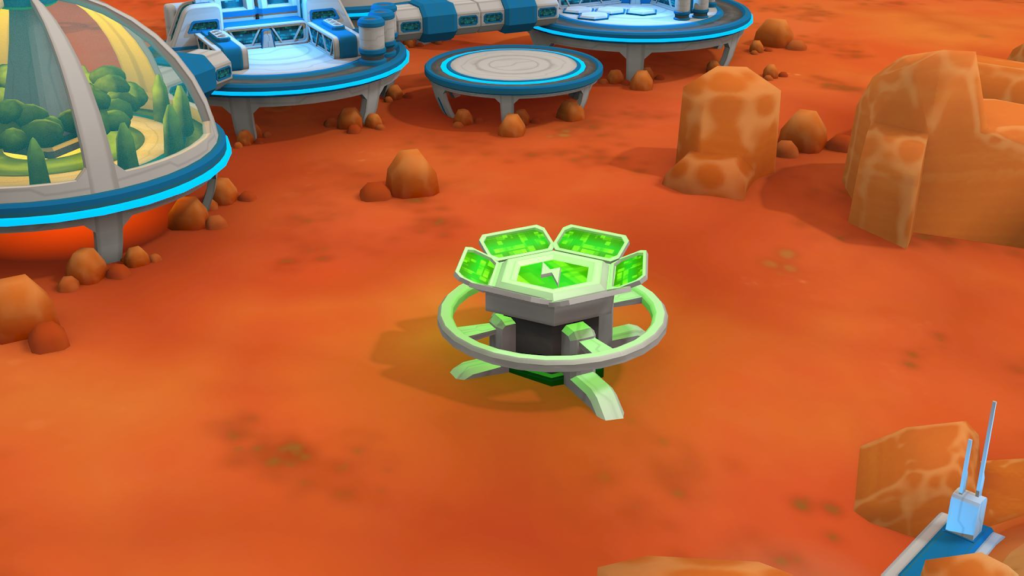Virtual RECF Aerial Drone (VRAD) combines the excitement of Esports and the educational value of computer science with a competition focused on real-world programming skills and gaming strategy.
Surviving on Mars can be difficult, but it is not impossible. VRAD has created a game to show you what it takes to live out there and how much fun you can have while doing so. The game itself is an endless runner-style survival game where you must program drones to operate on Mars and race to collect resources for your space base.It will take quick reflexes and quick thinking in order to survive the harsh conditions of our neighboring planet.
What is VRAD Martian Survival?
The REC Foundation in partnership with Robotify, sponsored by NASA, have created the world’s first global multiplayer virtual aerial drone competition called VRAD Martian Survival. It is a game in which you are on Mars and must survive the harsh Martian environment. You have to find shelter, food, water, and other tools so that you can live long enough to be rescued. The goal of VRAD Martian Survival is to last at least seven days before rescue comes for you.
Accessing the Game
For the device requirements, Robotify simulations will run on most devices but for VRAD competitions, it is recommended to use a device with a keyboard and mouse such as a laptop, desktop or chromebook. WebGL support is required. You can check if your device supports WebGL at get.webgl.orgwebgl2. The recommended browser is Google Chrome. As for network connections, a minimum internet speed of 10-15 Mbps is recommended because a disconnection from a match will count as a loss.
Creating an account
Register your team by creating first a free account through https://www.robotevents.com/. You can register one or more teams. The Primary Team Contact will be considered the “coach”. The registration fee is $100 per team. Once completed, the primary contact will receive the login credentials and a team code for Robotify. Students/participants then create a robotify.com account and enter their team code. Teams that qualify for the championship will have an opportunity to register for the championship in April for an additional fee.

The Team
The teams consist of a maximum of three students and one coach. Teams can be either Middle School Teams or High School Teams. Once the team is registered, that team may not change the grade level. They must be enrolled in International Standard Classification of Education (ISCED) level 2 or 3 education.
Scoring
A team can accumulate points by returning minerals to their home base where each mineral is equal to one (1) point. The team’s end of match score will be equal to the number of minerals they have mined and delivered to their base. Minerals are found at mines where these contain randomized numbers in the range 1 to 5. In mining a mineral, a drone can mine numbers of minerals that are equal to its capacity and a mineral is only counted if it’s delivered by a drone to the team base.
Drones to use
There are two types of drones played in the VRAD Martian Survival – Type A drones where it can be controlled by TeleOps via keyboard inputs. Another type is the Type B drones where these are ones that do not have access to TeleOps. These can have a maximum of five (5) hull points distributed to them. Hull points describe the overall utility of the drone. It has access to three (3) attribute points and it also increases the drone’s mass.
Home Base
In every match, drones begin at rest on their home base landing pad. Drones cannot enter the opposition team’s home base. A drone can deliver minerals to its home base by entering the colored cylinder surrounding their home base landing pad and using the drone API to deposit the minerals.
Practice through Projects
Students can create projects in which to practice and test code and these projects can be used in competitions as well. These projects can also be shared via link and can be either private or public. Public projects can be forked by anyone who has a copy of the link. Projects can be created in the RObotify projects system by navigating to robotify.com/projects.
Competition
Preseason – Competition mode for preseason will be limited to a one versus one basis throughout preseason. There is no limitation on other student team members contributing prewritten code to a match but the competition is limited to a sole student actively participating. Team rankings, however, will be calculated throughout preseason, based on the system laid out in the ranking system and rankings in preseason will not affect championship qualification.
Competition proper – Competition mode will be open to teams up to three (3) players. The specifics of game rules and competition rules will not change during the competition season except in exceptional circumstances based on required improvements to balance the competition or technical improvements.
Championship – Qualifications to the championship are based on the TRS of championship. This will determine both division rank and type. Divisions will be created on the basis of acceptance of the championship invitation and TRS ranking.
Team Rating Score (TRS)
TRS is expressed as a numerical value. When a team takes part in a ranked match, their TRS will be raised or lowered based on the match outcome and the other team’s TRS at the start of the match.
This drone competition is a one of a kind experience for someone who wants to explore, engage in programming and the design process just like a NASA astronaut. Travel your way to Mars and experience, retrieve and manage fuel supply by adapting strategy and drone sensors/algorithms to survive this planet’s harsh environment.
Reference: